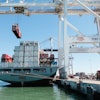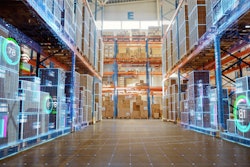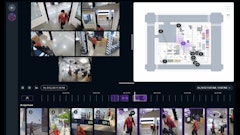
For almost a decade now, the metaverse has been heralded as the next big thing for almost every industry, including supply chains. And while consumer-facing initiatives like Mark Zuckerberg’s Meta project has yet to bear real fruit, there are some signs that the fusion of physical and digital will be transformational for supply chain leaders and how they will manage their supply networks in future.
Renault Group, for example, recently announced its move to the industrial metaverse, with four crucial dimensions: mass data collection, digital twins of processes, connecting the supply chain ecosystem and a set of advanced technologies like 3D visualization.
The Group hopes that, by 2025, "the Metaverse will generate savings of €320 million, plus €260 million in inventory savings, a 60% reduction in vehicle delivery time, a 50% reduction in the carbon footprint of vehicle manufacturing and a contribution to the 60% reduction in warranty costs." These would be impressive figures indeed. But, as a relatively new concept in practice, the evidence is still thin on the ground when it comes to the benefit of immersive technology in the supply chain industry.
Many companies who are dependent on Web2 and focused on their move to the cloud and more immediate benefits might not be looking too closely at the metaverse right now, but to stay ahead of the curve, businesses will need to look for use cases for its deployment within their business that deliver a strategic advantage.
So, how will 2023 see the relationship between the supply chain and the metaverse evolve, and what do supply chain managers need to explore as they take their first steps into the metaverse?
A defining year for supply chains
The last three years have seen pretty much constant disruption of supply chains. But this industry is nothing if not resilient, and the coming year will see further innovation to shore supply chains up against the possibility of further, disruptive global events. This will involve less global sourcing of parts and products as some companies look to near-shore production closer to their home markets. Companies have globalized their business operations and sourcing strategies over the past decade to help reduce costs, but there is a definitive shift towards sourcing goods, parts and raw materials closer to home markets to hedge against the impacts of global geopolitical and economic turbulence. However, the advent of the metaverse and advanced, immersive technologies tells us that near-shoring might not have to be the sole, go-to tactic for building resilience to counter the unexpected.
2023 will see some larger companies begin to dabble more in the metaverse, exploring how it may be used across various areas of their operations. While Virtual Reality (VR) and Augmented Reality (AR) are technologies that have been around for many years now, a market driver for widespread uptake has been absent until now. As with any disruptive technology, there needs to be a very good reason for both companies and consumers to adopt it en masse, and I suspect that 2023 will be the year companies begin to find reasons for integrating the metaverse into their supply chain operations.
The massive move to migrate IT environments to the cloud in the last few years has built the foundations for the metaverse to gain traction in numerous industries. In retail for example, some companies have begun to experiment with the idea of digital avatars visiting metaverse clothing shops to make real-world purchases. Meanwhile, manufacturers can better visualise production processes by creating Digital Twins and 3D virtual assembly lines.
This last example can just as easily be transposed to the supply chain. In 2023, I would expect to see early proof-of-concept demonstration within larger companies of metaverse technology being released in the market and the success of these demonstrations may well define how enthusiastically the wider supply chain industry adopts the metaverse.
Fusing physical and digital to ease logistics flows
While some aspects of the metaverse may seem a little woolly – existing only as vague hints of future potential – there are some applications that supply chain managers can look to right now. It is possible to produce a digital version of the information flowing across the supply chain, so digital transactions mirror the physical movement of goods as they move across the supply chain.
By combining these transaction flows with IoT sensor data – for example, to derive insights around the condition and location of shipments across the globe – supply chain teams will be able to begin to build a more accurate picture of supply chain operations. That 3D picture can potentially be visualized within a supply chain metaverse, and bring new levels of visibility, new capabilities around planning, and unprecedented connectivity that will present new opportunities for collaboration. Through the metaverse, intelligent planning tools could even support warehouse design processes and offer insights across an entire business network to help measure and improve sustainability commitments. By leveraging AI and machine learning in metaverse environments, organizations can also try out ‘what if?’ scenarios before applying actions to the physical supply chain.
So, for example, companies could simulate disruptive events, such as a regional conflict a natural disaster in the metaverse, in order to understand the impact on the rest of the supply chain. They could also simulate the result of introducing new suppliers to replace any disrupted suppliers, and how this could impact logistics flows in the network.
It’s clear that immersive technologies can offer a range of benefits for the supply chain industry, but as mentioned above, it will take the investment and proof-of-concept from larger companies to give it real momentum. My money is on this technology completely redefining can visualize their supply chain operations in the long-term. There will, no doubt, be teething problems and failed ventures. But, as with cloud technology, the potential benefits are massive. With companies looking at any means to reduce costs and increase resilience, you can bet that the metaverse will become vital in the coming years.
A game-changer in waiting
It’s sure to be another interesting year for supply chains. The metaverse may be taking some time to achieve lift-off, but as more and more investments are made into immersive technology, I have no doubt it’ll get off the ground soon. There’s already a place for supply chain practitioners in the metaverse with the use of digital twins and 3D visualizations, and as other use cases and knowledge of the potential benefits grows, the smart money is on it becoming a game-changer for different industry sectors.




















